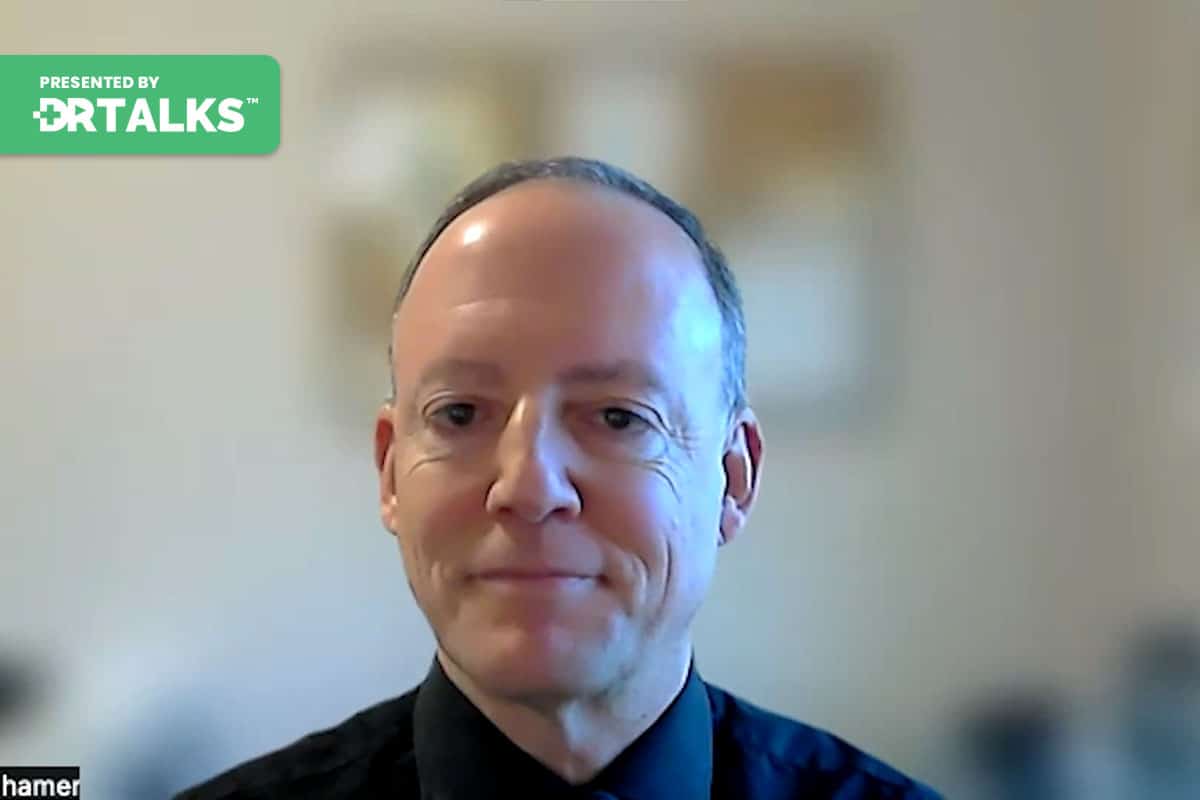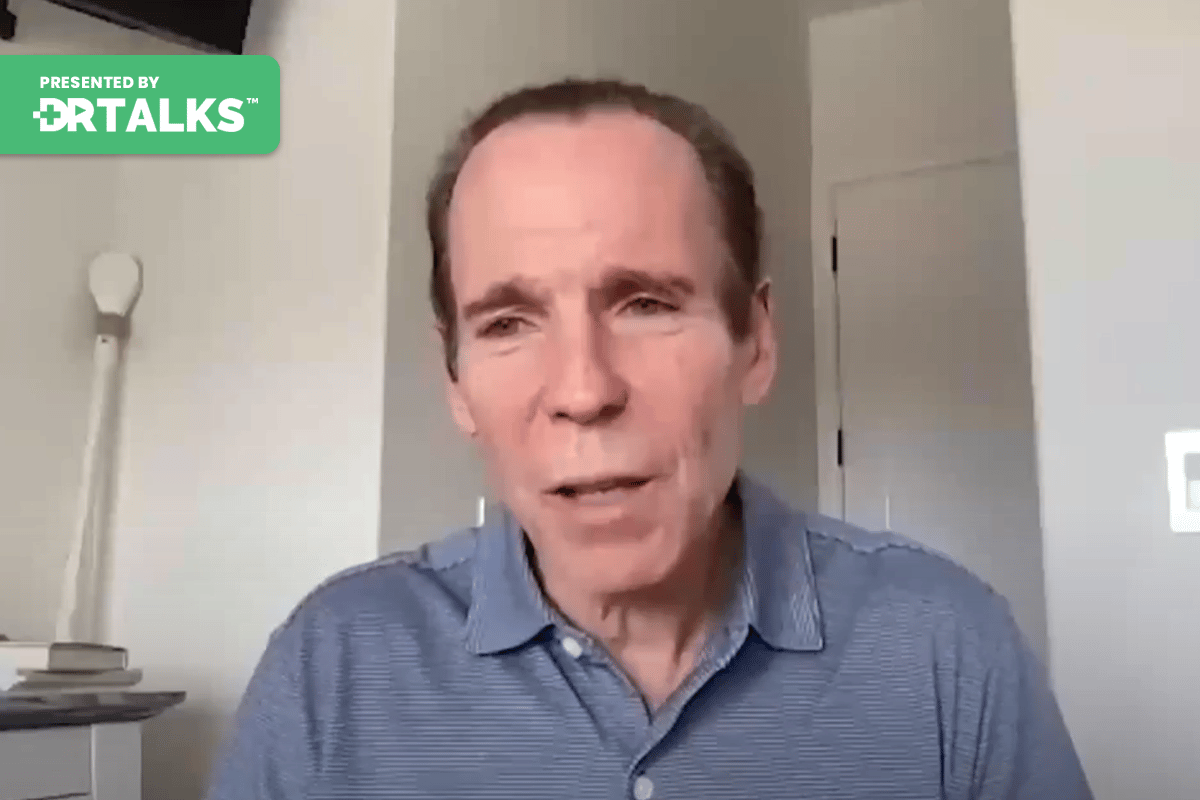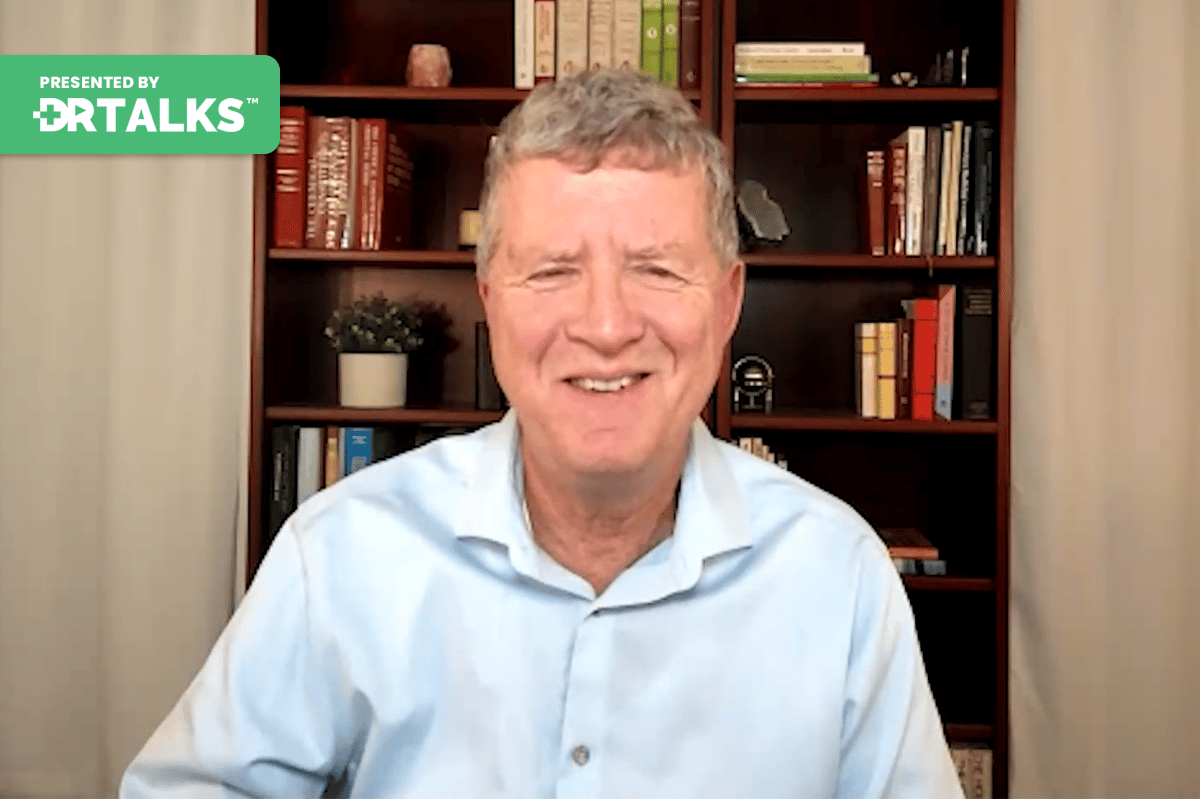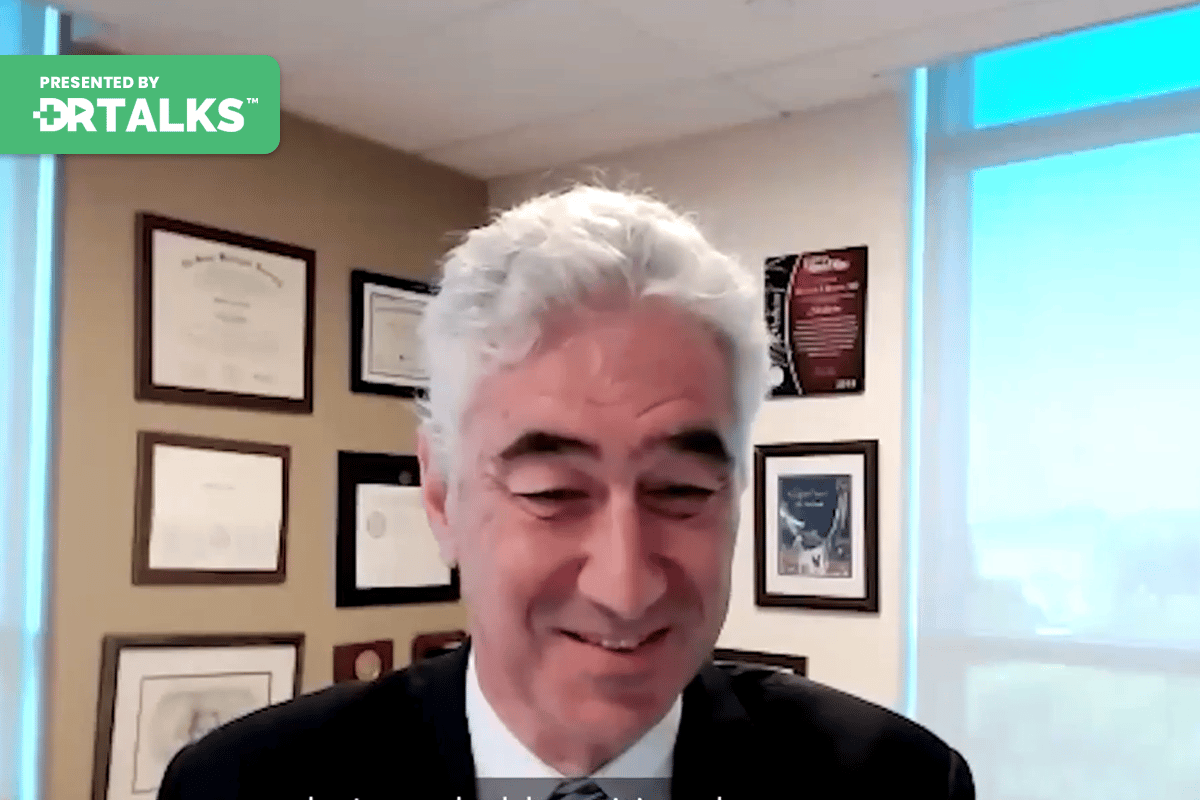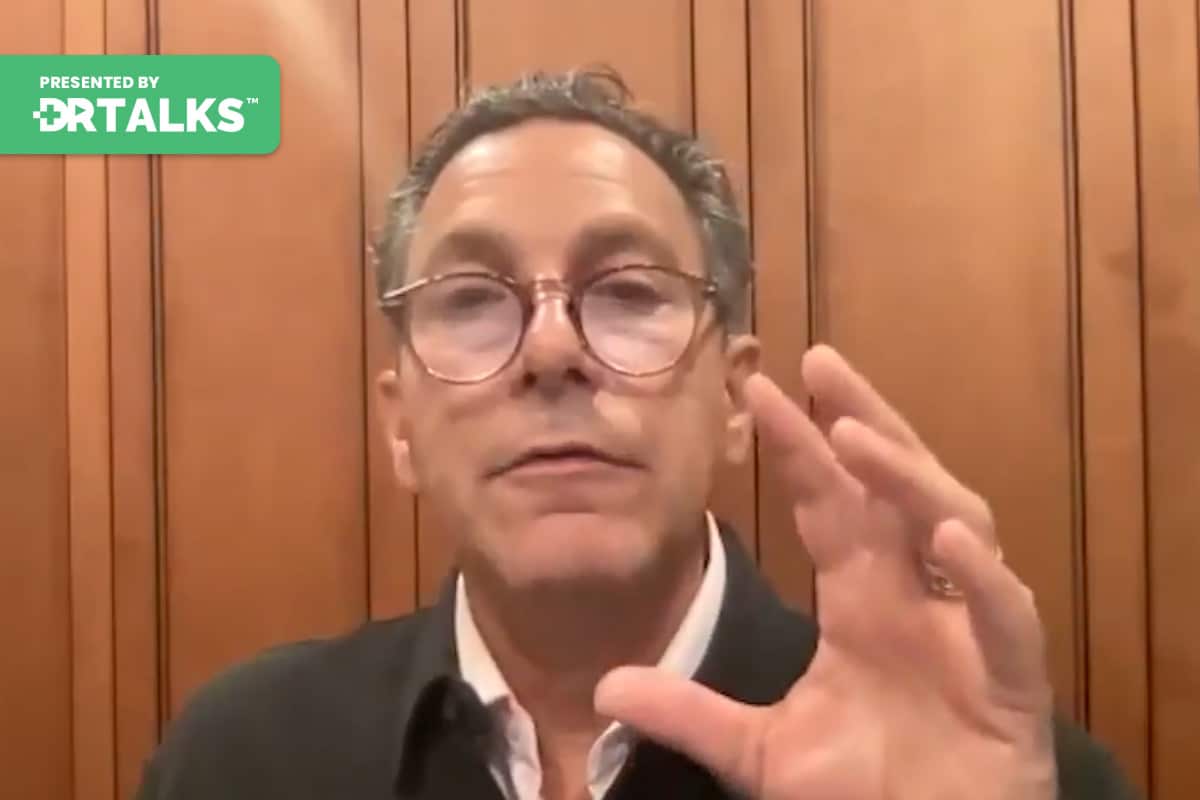Join the discussion below
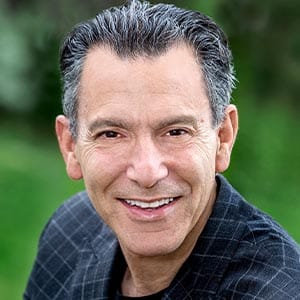
Joel Kahn, MD, FACC of Detroit, Michigan, is a practicing cardiologist, and a Clinical Professor of Medicine at Wayne State University School of Medicine. He graduated Summa Cum Laude from the University of Michigan Medical School. Known as “America’s Healthy Heart Doc”. Dr. Kahn has triple board certification in Internal... Read More
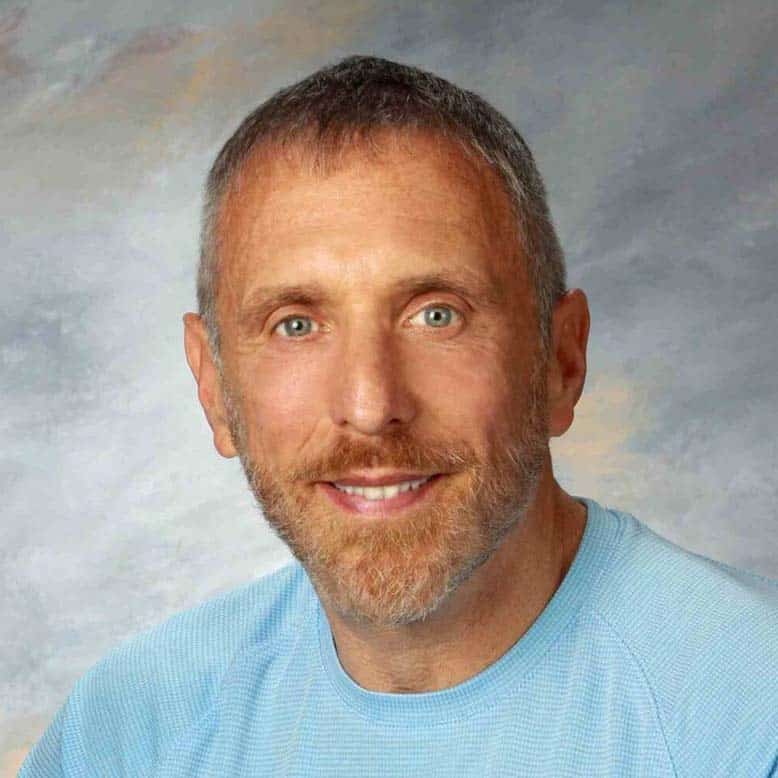
My dream that started 10 years ago was that THE WORLD MUST KNOW MORE ABOUT NUTRITION! After all, if it were not for my Cardiologist, who knew about the benefits of nutrition before pills or procedures I would not be writing my story. I would not have a stage that... Read More
- Faced with the option of bypass and valve surgery, or even heart transplant, Paul Chatlin was offered a path of nutritional therapy for heart care at the world -famous Cleveland Clinic. He chose the latter and found evidence his heart was healing within months. His teaching tips are not to be missed
- Paul then set up a massive educational system www.pbnsg.org to support others on the same journey and implemented the first plant based nutrition education program in a major medical school, Wayne State University in Detroit
Joel Kahn, MD, FACC
Well, good day everybody. Welcome to another absolutely amazing interview, here at Reverse Heart Disease Naturally Summit. This is Joel Kahn, cardiologist. You know that, and hopefully you’ll have been excited, by all the interviews we are doing, but today hold on, buckle up, put your seatbelt on, it’s a good one. You’re gonna meet somebody, that if you’re in Detroit where I am, you know very well, and if you’re somewhere else in the world, you may not know until right now, so without further ado, my dear friend, fellow Detroiter, Paul Chaplin. Good day, Paul.
Paul Chatlin
Good morning. Good morning to all, and hello my dear friend, Dr. Joel Kahn.
Joel Kahn, MD, FACC
And I’ll just point out, people will be watching this in Singapore, in Australia, and it might be middle of the night for them, but we’ll say good day to all, because of their international reach, that the idea of reversing heart disease, naturally has it’s international science base, and certainly it’s unfortunately, an international disease, heart disease, so you and I are approaching, almost a decade of collegiality, friendship, and working relationship. We’ll talk about that. That started early 2014. Why don’t you tell us that story? Let me just say as a disclaimer, Paul is amazing. You really wanna watch every second of this interview, but there’s no MD after his name, there’s no PhD. Paul is the real deal. Paul is why we’re having this summit, and thousands in potentially millions of people like Paul, who have the courage to believe that you can stabilize, and reverse heart disease naturally. So, Paul called me in January, 2014, and, Paul, bring us up, what was your life like summer of 2013, and what started to happen?
Paul Chatlin
Well, I was basically waking up one day, with severe chest pressure, and it continued for about two, three months. It would happen in the morning, during the day, not too often, and come back at night, and it just would continue and continue, and then one day I was at a meeting, and I left the meeting and I could not take seven steps, without just stopping and I was cold sweats, and I knew right then I needed to go seek a doctor. I should have done it months earlier, but like most silly people like me, I thought it would just go away. I didn’t know much about it back then and didn’t go away. It actually got worse, so I finally decided to go to my general doctor, and what he discovered was a heart murmur, he had not heard before.
Joel Kahn, MD, FACC
You were about 53?
Paul Chatlin
53, 54, yeah.
Joel Kahn, MD, FACC
And you had a doctor but you also had what? A pretty scary family history of heart disease. You knew that this was out there in your genes, potentially your genes.
Paul Chatlin
Yeah, my dad and his three brothers, all had bypass surgery in their fifties. Two of them never made it off the table. One of them who is my absolute favorite, was never the same mentally, and my dad who did get through it was in pain, for four or five days and saw him cry. I never seen him cry before, so that’s the memory I have as a young man in my family.
Joel Kahn, MD, FACC
And I don’t wanna go off on a tangent, but at age 53, 54, you had a primary care doc, you had this fairly scary family history. You were aware, if I recall your cholesterol was pretty darn high, at that point.
Paul Chatlin
Well, back then you had three basic medications, Zocor, Lipitor and pravastatin. So, I tried the Zocor but got the side effects of it, literally couldn’t walk one day, so after a couple days of being off it, everything was fine. They put me on Lipitor, six months into Lipitor same situation. So, they put me on 80 milligrams of pravastatin, and the best they could do is take my cholesterol, from a number of 350 down to 280, but at that point back those years ago, my doctor was like, “Okay, well, that’s about as good as we’re gonna get.” And that’s where I stood for the next 20 years or so.
Joel Kahn, MD, FACC
And I hate to say this, we’re gonna have some other exciting summit interviews, on the advanced ability to detect heart disease, even when you’re asymptomatic using CT scanning. We’re gonna be talking to Dr. Matthew Budoff from UCLA, and Dr. James Minn in New York, but you had not had a heart calcium CT scan, when you turned 50. It’s just not part of the standard medical program. I’m not blaming your doctor, but you had not had anything like that.
Paul Chatlin
No, not at all.
Joel Kahn, MD, FACC
It could have detected a couple years, before this period of what as a cardiologist, you’re having is new onset angina pectoris. Angina, Latin word for struggling or choking, in pectoris meaning of the chest, and it’s a pretty reliable symptom in a early fifties man, with a high cholesterol of family history, that you’re clogged up so what was the next step? You knew you were in trouble your primary care doc saw you, and you got referred to a cardiologist, I imagine. It wasn’t me back then.
Paul Chatlin
Right. I was referred to his suggested cardiologist, at the Beaumont Hospital and I did all the tests, up to a heart catheter and heart biopsy, and at the end of those tests, he looked at me, and he said, “Paul, I’ve been doing this for 20, 30 years, and I could only start to tell you need a heart transplant, or bypass surgery pretty quickly.” So, he said, “But let’s you and I, schedule a heart catheter.” So, I scheduled it. In the meantime, on the way home that day, I finally decided, foolishly I had not told anybody in my family, what my situation was hoping it would go away. I stopped at my wife’s office, brought her into the conference room, and started describing the struggles I’ve had, for the last two, three months, and when she started crying actually her boss walked in, and at that time he’s like, “What’s going on?” And we explained it to him what I was going through, and he said, “Hold on.” And it turned out a couple years prior, he had a procedure done at the Cleveland Clinic, and he happened to know some people, and he actually got me in for an appointment the day before, I was gonna get my heart catheter at Beaumont. So, that’s where we did. We drove to the Cleveland Clinic, and I went through a same types of tests, but it also included a heart catheter, and there it was discovered, that I did not need a heart transplant, but rather immediate bypass surgery.
My right artery was 100% blocked, and my left arteries couple were like in the 65, 70% range. So, there I was, all geared up ready to go, for bypass surgery and it turned out that the doctor, that I was assigned, his mentor was Dr. Caldwell Esselstyn in medical school. So, as I was headed toward the operation surgery door, he stopped, he said, “Would you consider a nutrition change, and maybe we don’t need to have the surgery today.” Joel, I did not know what nutrition was 10 years ago. I knew it was like, hey, eat fruits, eat some vegetables. I had no idea what it meant, but I was up to doing anything to not have the surgery, because I saw how it affected my family. So, basically I said I’ll do anything. Yes, I’ll try the nutrition lifestyle change. He picks up his phone, it’s 9:30 at night, he dials Dr. Caldwell Esselstyn, who I’d never met before, nor did I ever meet the doctor prior, and he said, “Hey, I’ve got somebody I want you to talk to.” And that was the first time I heard of Dr. Esselstyn, and spoke to him and he said, “Why don’t you go on home and I’ll give you a call.” And sure enough, the next morning at eight o’clock, he asked me to read his book which I did end to end, and the next day I got rid of all my meat, dairy and oil, and went right to Whole Foods at that time, and I started my lifestyle change.
Joel Kahn, MD, FACC
Pause there. I mean, Edoff, everybody listening, you’re hours away from open heart bypass, saw the sternum open, maybe do some work on a heart valve, but Cleveland Clinics famous for two things. It’s famous for the largest volume of heart surgery, in the United States, and may be the largest in the world, I’m not sure. 10 times the number of heart operations, that they do at my local hospital, which is a big hospital, and it’s also famous for Dr. Caldwell Esselstyn, who I had probably met five years earlier, than this portion of the story, but not 25 years ago, and he wrote a book, “Prevent and Reverse Heart Disease” that I have multiple copies in my office, for patients to take home and read and study.
About a third of the book are amazing recipes, 150 healthy recipes and two thirds of the book, is the science of why regions in the world, don’t know what heart disease is, but in the western countries, in the United States, it’s the number one killer of men and women, but here you are hours away, and you get the other Cleveland Clinic message, that there’s nutritional therapy, and I mean, how difficult was it, to get out of the Cleveland Clinic? I mean, you got a surgeon with your name, on his schedule in the morning, you got nurses, you got anesthesiologists, perhaps not too many people walk out of the Cleveland Clinic 12 hours before open heart surgery. I mean, your own mental state and everybody around you. I bring this up ’cause it’s hard to be a maverick. It’s hard to choose the other path, even if science says there is another path, ’cause conventional medicine, is gonna push you towards surgery, angioplasty, stenting, valve replacement transplant, so how difficult was that whole process, even before you got on the phone, with Dr. Esselstyn the next morning.
Paul Chatlin
I was just on unchartered water. I mean, I–
Joel Kahn, MD, FACC
You didn’t have a buddy taking you through this.
Paul Chatlin
I didn’t have Dr. Joel Kahn right by my side. I was just, you know, I went in with the idea that, ’cause I mean here I was, I remember like telling myself as they’re wheeling me in, just wake up from the bypass. That’s what I was thinking. Like, just whatever you do, just wake up. That was my thoughts before as I was being wheeled in, for what I thought was surgery and then I kept saying, God, you know, like we do this in our lives, like, God, if you get me out of this one, I’ll owe you a big one and sure enough, within like two minutes, my doctor’s looking at me going, “Well, I’ve only offered this, to one other person in 20 years. Would you consider a lifestyle change?” And I’m like, I’ll do anything. I’ll do whatever you want so yeah it was–
Joel Kahn, MD, FACC
You were at a vulnerable, desperate open point in your life and obviously Dr. Hanna at the Cleveland Clinic, is a respected and senior doctor so you weren’t hearing this from a rag tag magazine, that you could reverse your heart disease. You heard it from the man. Wow, so you actually drove home that night?
Paul Chatlin
Yeah, we finished the four hour , after the catheter and about 12 o’clock at night, my wife says either we get a hotel room, or we’ll just drive home, and I really wanted to sleep my own bed, so I was like let’s go home. So, I got home by three o’clock and sure enough, the next morning Dr. Esselstyn calls me at eight o’clock.
Joel Kahn, MD, FACC
Now, we’re gonna hear and learn, from the great Dr. Esselstyn, during this reverse your heart disease naturally summit. Very grateful for that, for all of his work, so we’ll get the details of a whole food plant based, no oil, no added sugar, alcohol, caffeine, healthy, healthy hard diet. Let’s emphasize the positive. There are some things you take away, but there’s lots of things you probably weren’t eating, gigantic salads and steam kale, before the Cleveland Clinic visit, I imagine.
Paul Chatlin
Well, I like salad but I would always have it, with the dressings that were not good for me, so now it’s quite a change in my life.
Joel Kahn, MD, FACC
So, you’re home, you have a phone call with Dr. Esselstyn, you look at your pantry, you look at your refrigerator, your freezer, and you’ve got his book to be a guide, which is a wonderful book and at the time, one of the maybe three or four out there, that really could guide patients, and I mean, what’d you do in your own home? Because people listening, that are considering nutritional change for various reasons, they have to do the same thing. What’d you do?
Paul Chatlin
Well, I mean, first, my wife and I agreed, that like as much as I would have and would love to have it, her journey, it was truly just my journey, and I’m thankful that we’re still in love, and we respect each other’s space, so we kind of sectioned off half the pantry for me, half the pantry for her and she went with me to Whole Foods, and we started a label read because I just couldn’t believe, all the foods I was eating that I thought were healthy, that had oil in it so it was just–
Joel Kahn, MD, FACC
So, like six weeks.
Paul Chatlin
Yeah.
Joel Kahn, MD, FACC
Six weeks after this what was your typical breakfast? You’re already got it a little experience doing this stuff. The pantry’s different, the refrigerator’s different. You become a pro in reading labels.
Paul Chatlin
Right, it’s the same breakfast I have today. Either it’s gonna be a steam kale, Swiss chard, arugula, it could be a fresh salad if I feel like it with balsamics, or it could be oatmeal with some fruit, and whatever I don’t have in the morning, I usually have later in the late morning or early afternoon.
Joel Kahn, MD, FACC
And then what would fill, what would be a typical dinner you’d eat and how would–
Paul Chatlin
Well, again, I could go back, to either one of those having a salad again. I try to now have four or five, steam type lettuces a day or salads, but I would also have whole wheat noodles or beans, with vegetables so, Joel, from a person who grew up, as a true foodie where everything, was built around breakfast, lunch and dinner, and the people I hung out with, and the massive amounts of food I ate, part of that lifestyle changes really saying to yourself, you gotta eat to survive, but food can’t be the highlight of your day any longer.
Joel Kahn, MD, FACC
It’s a therapy. For you was a life altering, life saving therapy, and you got real good at this. I mean, you were really and still a legendary, as a disciple of a very famous doctor, and a food therapy doctor, a reverse your heart disease doctor, so how many months did it take that you were back, to either your baseline activity, or actually starting to do more, and noticing that you no longer had angina distress? How quickly was that process?
Paul Chatlin
Well, the angina actually went away in about two weeks, but I also had an enlarged heart leaky valves, scars that goes right side of the aorta, left bundle block, heart murmur, along with the full blockage of the right artery, so they really had me on bedrest for the first 60 days, where they had me basically sleeping 16 hours a day, to help shrink the heart, and the valves would not have to be leaking as bad, or would be, you know, saved, so it took me about 60 days to start feeling like a human, about 90 to kind of get to where I was before, but during that period of time, I probably dropped about 40, 50 pounds, so I was a different person.
Joel Kahn, MD, FACC
Wow, so about three months into this, you could walk stairs, do your work, ’cause you did, you know, you were employed, you had your own business and communications, and when did you actually add in riding a bike, walking, doing some weights, which of course you’ve been very dedicated to now, for the decade but when were you able, to actually up your game, to maybe a higher level of fitness than before?
Paul Chatlin
Well, you know, it was a process. I mean, after about 90 days I started walking, and every week I would walk a little further, and then kind of got into walking, and then did yoga for a while and then realized, that I had a love affair of bike riding, so I incorporated that, always doing three, four workouts of lightweight lifting, throughout my life so probably within 120, 150 days, I started working my way up, but I just now because I’m a little bit older, I’m not reaching any kind of great milestones, with hundreds of miles of biking or running or walking. I just try to give myself a good hour every day of activity.
Joel Kahn, MD, FACC
And as we record this thank God, let’s shift from your own personal health, to what you did with your passion, for education and others in a minute, but thank God you’ve still to this point, you’ve had no bypass, you’ve had no stent, you are on as you honestly told us some medication, for your cholesterol ’cause there are genetic inputs, that even steam kale and balsamic, doesn’t lower everybody’s cholesterol, to the point we need to lower it, so you’re on medication and you’ve inspired many, but let’s talk about that inspired. What was the negotiation you had with your maker, your creator, your spiritual lead, that you wanted to give back if you got through this, and recovered, which you have, and that led to our meeting in early 2014. I mean, what was that mental mind frame?
Paul Chatlin
Well, it was just the promise I made on the gurney, which was you get me out of this situation I’ll give back. I didn’t know what I was gonna do, but here I was getting out of the situation, and my first thing I realized was I couldn’t cook, like I was having to make all these changes with what I eat, and I had no idea how to cook and I was just not a cook. So, I went to the Esselstyn cooking class, half day class, I think back then it was like six, $700, so I thought, oh, what I’ll do is I’ll expense it, the Blue Cross Blue Shield and they’ll reimburse me, because why would they wanna pay me 700 bucks, instead of 125,000 for the bypass surgery, and I got denied. I said, oh, that’s my give back. I’m gonna work my way up to Blue Cross Blue Shield hierarchy and get somebody to gimme a pay code, so other people could go to a class of cooking class, and get reimbursed, so I took like about two months, got up to the highest level of Blue Cross Blue Shield, which they denied me and said the reason why, is that I have to work with the Michigan legislature, to get that approved and pass, and I realized that is something I just did not wanna do, so instead I took a $20 ad in the local paper, just on a flyer and I said, hey, if you know, I said I was scheduled for bypass surgery, I was able to stop hopefully someday reverse it, and I did not have the surgery but rather I’m feeling great. If people wanna understand a plant-based diet, the first 20 people I’m inviting you to my house. It was a really simple ad in the paper. Within two days I had 20 people signed up. So, I brought them over to my house, never met these people in my life, and each one of them had a heart disease issue, and me not being a doctor, but having starting to go deep read in a lot of these areas, I just told my story, I gave some drops of knowledge, not much but a little bit, I opened up my pantries, and showed them the cooking stuff I’m using, and say goodbye to them but it was knowing at me, so I said, well, I’ll do it one more time. So, I did it again within a couple days again, another 20 people showed up and I thought, wow, this is my give back, but I started realizing that these people are asking me, a lot of science questions and I’m not a doctor, so I called the heads of three hospitals, local hospitals here in Michigan, and I said do you have interventional cardiologists, you give me three names? Each one of them gave me three names, but the one name that was repeated was Dr. Joel Kahn.
Now, I had never heard of Dr. Kahn, nor had ever met Dr. Kahn. but I thought, well, since they’re repeating, his name three times, I’m gonna introduce myself to him first. So, there I was, I gave you a call, you said, “Come on over.” So, I remember that day like it was yesterday. You brought me into your house, your kitchen, I got to meet your family. We spent four hours talking and it was I walked out, I said I’m not calling anybody else. This is my guy. This is the guy I want ’cause, you know, and, Joel, I could just say on just a personal level, 10 years later I look at you, yes, you’re you’re my cardiologist, yes, you’ve never said no, when it had to do with the organization, called the Plant-Based Nutrition Support Group, but you are my brother. You’ve been there for me for 10 straight years. Thank you.
Joel Kahn, MD, FACC
Well, and I will say and thank you for that. Of course, your kindness is abundant, but you weren’t actually coming to my house, to interview me to be your cardiologist. You were coming to my house to interview me, to start up an organization to really educate, on the power of nutrition as a disease stabilization, disease reversal tool because there was no community. We’re in Detroit area, but anybody listening anywhere where’s your meetup group, to help support those that are taking, heart disease reversal seriously, and using nutrition as their platform. It’s very rare to find one. There’s a few more now than there were a decade ago, but in Detroit there were none essentially, and you were the pioneer and we did the same thing. We put a little ad, we got a room at my hospital, that held about 80 people, and you know the numbers way more than 80 showed up, right?
Paul Chatlin
123.
Joel Kahn, MD, FACC
Okay, and we did it again, and that was in the middle of a February snowstorm. It was a bad night. People showed up and we did it again the next month, and there were more, you remember.
Paul Chatlin
We had 141.
Joel Kahn, MD, FACC
Okay. And this was early 2014, and then the hospital called and the hospital called, and said a hospital I’d been on staff at that point 20 years and had brought in unbelievable amount of business, to the hospital, we don’t approve of what you’re doing. They told us we were violating the fire code laws, ’cause we had more people in the room, than the heart auditorium held. If you can imagine we were able, to pack out the heart auditorium talking about steam kale, and they also wanted to be clear, that they had not approved the nutritional program, through their own dietetics division, and it was some experimental program they needed to review, so by that point we had an organization, and you named it Plant Based Nutrition Support Group, or we all say PBNSG.org. Everybody go to that URL, PBNSG.org, a vibrant, vibrant, active, up to date organization and website, and we moved to a high school auditorium, and just give the audience for a couple minutes. It’s been now many years in the making, and we’ve shifted to more virtual meetings, because of just the way the world has gone, but what you built for an educational platform, that did not exist and really has expanded worldwide, but go for it, explain.
Paul Chatlin
All right, so the funny part about that story, was they called us to say we couldn’t go, to the Beaumont auditorium three days, before our third meeting so remember I was scrambling, I was calling churches, synagogues, and it’s a Birmingham school system that opened up, both high schools for our activities, and we’ve been loyal to them ever since, and that continued on, so what we were doing as an organization, most importantly is it was a place for people, with heart disease to come meet each other, and listen to great speakers like yourself, and others talk about heart health. That was the beginning, of the Plant-Based Nutrition Support Group.
So, each month we’d have an activity, and then we started to expand and having culinary events, and then we had a moment where we were deciding, or I was deciding do I go into animal rights or the planet, or maybe expanded it to diabetes, obesity, some other modalities, and that’s the direction we went into, so we expanded maybe three, four years into it in that area. So, today we have about 11,000 members worldwide. It’s growing. We have a membership platform. Back then we would bring in a speaker event, a culinary event, and then I came up with the idea, of what we called small groups, and they were little small community groups. We had 54 at the peak that were in Michigan. We were starting to expand nationally, where somebody in a given city, could open up their doors and their heart to their neighbors that had health issues and like I said it was going great, and then unfortunately we got COVID, and as soon as COVID hit a few years ago back in February, because most of our members were probably 16 older, we had to put a hard stop to the organization, do a complete turnaround, and the question was, well, do we just stop it? Because everyone loved the live meetings. We’d have meetings that would’ve 500, to a thousand people at times, depending on who was there.
We’d have culinary events in the hundreds, or we went virtual so we made the decision to go virtual, and today we are a virtual organization, which, again, you could reach us at www.pbnsg.org, and today we offer the same types of events. Multiple monthly speaker events, multiple culinary events, we have what they call specialized support groups, so if you have diabetes, obesity, if you’re an athlete, a single parent, we have a lot of different specialized groups, that you could be with other like-minded people, and then we have ad hoc a variety of different activities, plus we’ve just instituted health coaching, so that’s who we are today and it’s growing. I mean the important thing is people know, how to use the Zoom.
Joel Kahn, MD, FACC
Yeah, and I think plant based nutrition, but the last two words, support group, because there’s a brother-in-law, there’s an employer, there’s a spouse, there’s children, there’s the medical community. Probably the toughest deal is you make a lifestyle change, and you ask questions and your own doctor pushes back, says you’re making a mistake, suggest you add back lamb or fish and you’ve done the signs, and you’ve read the works of the support group aspect. One of the pioneers that certainly, and we’re gonna have a wonderful interview, with Dean Ornish MD, who way back in the eighties, up a component of his heart disease reversal program, was community and support, and now with the Blue Zones project, it will be having a wonderful session with Dan Buettner, and learning about the community aspects of longevity, that he has studied and made so famous, but you brought Detroit and now digitally you’ve brought, the world a community, a support group, so you don’t have to walk alone. There is an African statement, if you wanna walk fast, walk alone, if you wanna walk far, walk with somebody else, because this is a lifelong plan.
We pride ourselves. I know you know that. We don’t have many people dropping off, and going back to paleolithic ketogenic meat heavy diet. They have been so impressed by your story, the weight loss stories, the diabetes reversal stories, the psoriasis stories, the just fulfillment of life. I mean, it doesn’t always have to be something, you measure on the scale. It can just be that you’re part of a movement, that also happens to benefit the environment, and is kind to animals and we’ve talked about all of that, over the last decade of PBNSG so it’s exciting, and you’ve sort of got a legacy. I mean, there’s not enough groups around the United States. There’s a vibrant group in Rochester, there’s a group in Chicago, but under different names. We’ve all heard now that the founder, and CEO of Whole Foods, John Mackey, who I know is a close friend of yours and ally of mine, is planning a national program that sort of is tangential, to what you did a decade ago, and I think you influenced so many people.
I mean, you get a lot of credit, not just your own personal health, but how you just showed people that you can go upstream, and succeed against hospital pressures, and pandemic pressures and a medical community, that still doesn’t celebrate plant-based nutrition, and teach it the way it should but maybe the last topic, just tell us about the curriculum because we all know, the future would be zip four in 20 years, and doctors and nurses and physical therapists and dentists, and dietician bring up plant-based nutrition, as the first tool in the toolbox, and that’s gonna take education in the school, so tell us what you’ve done with the largest medical school, in the United States, which is in Detroit, Wayne State University.
Paul Chatlin
Yeah.
Joel Kahn, MD, FACC
A long battle but share us with it, and these end of that story being a success.
Paul Chatlin
Right, let me just add before I get, and I will answer that. You were right. I’ve been able to help other cities start a group, because I’ve got a manuscript that I wrote, of how to get things started in your own community. They’ve done spinoffs of it in other cities, so I’m honored that they copied a lot of the things, that I developed early. One of the things that was interesting, was we had all of our speakers that would come into town, they all spoke at Wayne State Medical School, and in the morning before they come out, to PBNSG that evening, and there became a nice group of young doctors, that were committed to learning more about nutrition, as it would affect people’s health, and their patient’s health, and Amanda Martin was the first person I connected with, and she was a very strong willed lady, a brilliant lady, and she worked with the people in the curriculum, and then as she, you know, this didn’t happen overnight, this took years upon years. We had Robyn Benami, we had other people kind of leading the charge, and that continued for about five, six years, and finally lucky was my contact, and he got them to approve a curriculum, and this wasn’t a curriculum. Basically, what they said to us, is you create an add on curriculum for us, and we believe we can get it into our curriculum. So we took–
Joel Kahn, MD, FACC
Medical school, formal medical school curriculum, incorporating plant-based disease reversal education, which is radical.
Paul Chatlin
Right, and so we took 14 students, from five different medical schools, worked on it for 14 months. Like every month we have an hour or two session. PBNSG was sponsoring the whole act, all the activity. When we initially presented it was in curriculum form, they turned us down and then we had to break it up, into the nine systems of the body, which we did, and then they accepted, so today first and second year medical students, are learning six items of nutrition, that go across the nine systems of a body, for healing health and it goes with the idea, that I’ve been saying for 10 years, it should always be nutrition before pills or procedures, and I hope the day comes, where doctors look at that as the lead.
Joel Kahn, MD, FACC
And, again, in one of my books, I have the quote by the famous physician, Rabbi Maimonides, no disease should be treated, with medication before nutrition, and here we are still struggling a thousand years later, to make that a reality but you may have had, the biggest impact on the largest medical school, and it will take time. We all wanted it to happen five years ago, years ago. I’m sure if you speak to Dr. Esselstyn, Dr. Ornish, Dr. Fuhrman, Dr. Barnett, they wanted to happen 25 years ago, but you’re the man, you did it, and I think the entire world thanks you for it, so we’ll shut this down and everybody, I just wanna say again, you don’t have to live in Detroit to use the resources, to become a member of pbnsg.org, the recipe section, the education section, the video file and it’s active. There’s new events every month, so check that out and support it. Paul didn’t ask me to say this, but one of you listening is just sitting on a big donor fund and you wanna fund a little bit of pbnsg.org, that’s certainly been a struggle over the years, and we’ll rename the whole organization after you.
Paul Chatlin
We will. I’ll right now, we’ll call it your name, but, yeah, that is amazing, with all the people we’ve touched, Joel. I mean, and it’s been tens of thousand, You know, I still I’m just getting by month to month, I understand and that’s okay. I mean, the fact is we’re still around, when other organizations have failed, but, boy, if I could ever get a donation big enough, oh my god, I could save a lot more lives. It could help.
Joel Kahn, MD, FACC
We’ll leave it there on that hope and aspiration, and the fact you haven’t lost any of your ability, to dream big and wish you well, and your contribution to this summit, because we’re gonna talk about the science, of disease reversal but this has been amazing, and wonderful and thank you and we’ll catch up soon.
Paul Chatlin
Thank you. Thank you very much everybody. Thank you.
Downloads



